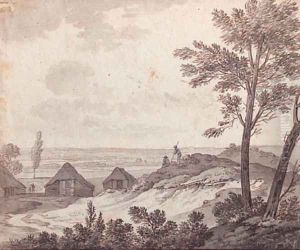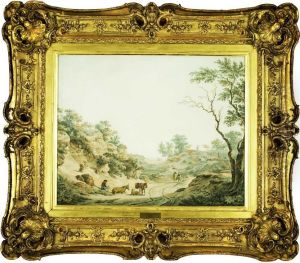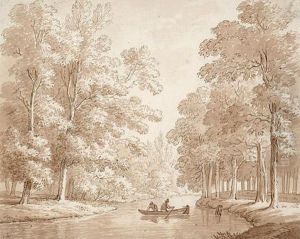Jan Apeldoorn Paintings
Jan Apeldoorn was a Dutch painter and draftsman born on August 27, 1876, in the Netherlands. He is noted for his contributions to the Dutch art scene, particularly during the early to mid-20th century. His works often depicted landscapes, still lifes, and animals, showcasing his keen observation and ability to capture the tranquility of nature.
Apeldoorn's style was rooted in the Dutch tradition, reflecting the influence of the Hague School, a group of artists who painted realistic scenes of Dutch life in a subdued palette. This was a movement that emerged in the latter half of the 19th century, and though Apeldoorn's career progressed into the 20th century, his art retained the essence of this aesthetic.
Throughout his career, Jan Apeldoorn stayed relatively true to his roots, not swaying significantly with the tides of avant-garde movements that swept through Europe in the early 20th century. Instead, he maintained a focus on the serene and the picturesque, which found appreciation among those who favored traditional representations over the abstract and the experimental.
Jan Apeldoorn's work has been exhibited in various galleries and museums in the Netherlands, and while he may not have achieved the fame of some of his contemporaries, his contributions to Dutch art have been recognized by art historians and collectors. He passed away on April 1, 1950, leaving behind a legacy of work that continues to be admired for its quiet beauty and representation of Dutch landscapes and scenes.


